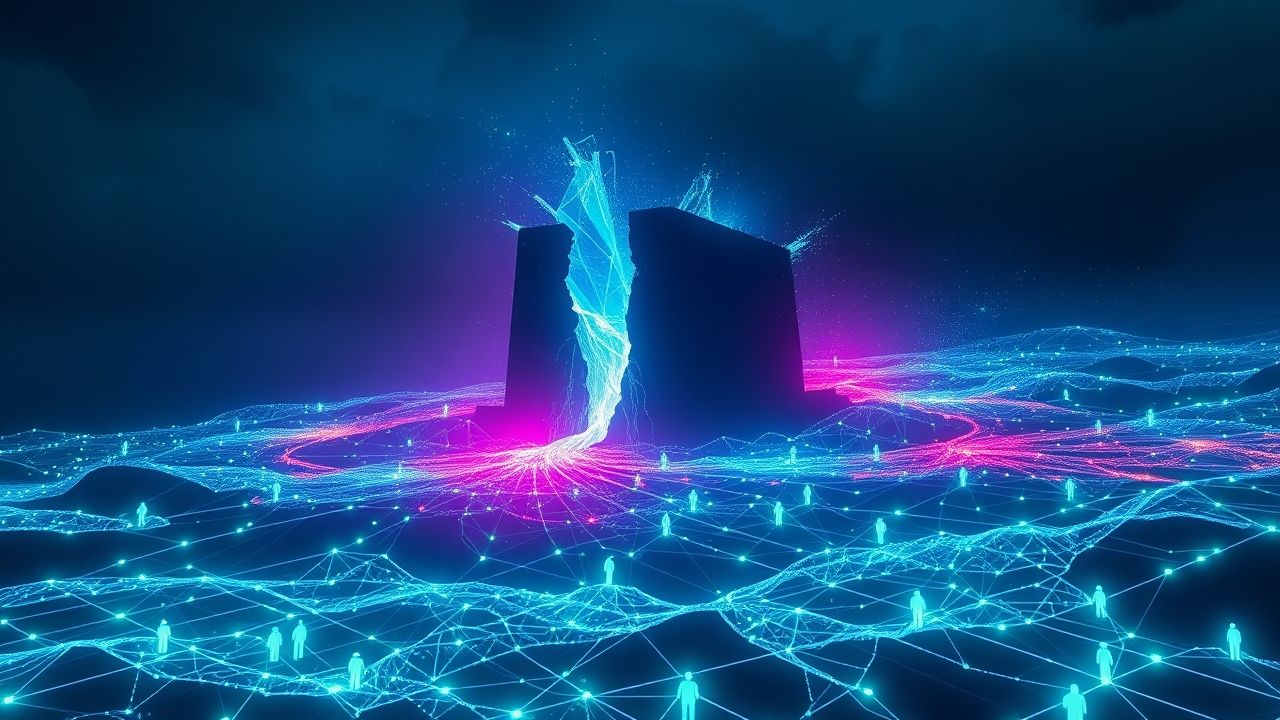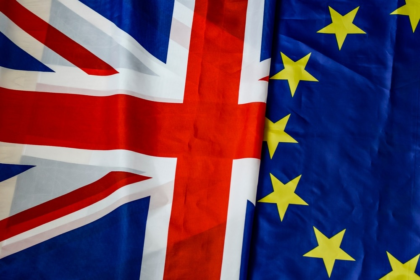In an increasingly interconnected world, discussions around control, ownership, and power dynamics have never been more pertinent. From global financial systems to the very fabric of our online interactions, a seismic shift is underway, driven by the concept of decentralization. This isn’t merely a technical jargon term; it’s a philosophical and architectural paradigm challenging traditional centralized authorities and promising a new era of distributed control. As a seasoned journalist who has observed the ebb and flow of technological revolutions, I’ve witnessed how quickly nascent ideas can reshape our reality. The push towards decentralization represents one of the most profound shifts of our time.
Key Summary
- Decentralization Defined: It’s about distributing power and control away from a central point to a network.
- Beyond Blockchain: While often associated with blockchain, decentralization encompasses broader concepts like DAOs, Web3, and self-sovereign identity.
- Re-architecting Trust: It aims to build trust through transparent protocols rather than intermediaries.
- Transformative Impact: Has the potential to reshape finance, governance, data ownership, and even artistic creation.
- Challenges Ahead: Faces significant hurdles related to scalability, regulation, user adoption, and security.
Why This Story Matters
The movement towards decentralization is more than just a tech trend; it’s a profound re-evaluation of how societies organize themselves digitally. It impacts everything from how we bank and invest to how we vote, communicate, and even own our digital identities. The central promise is greater autonomy for individuals, reduced censorship, and enhanced transparency. For citizens, this means potentially regaining control over personal data and participating directly in governance models. For businesses, it opens avenues for new, trustless marketplaces and efficient, transparent operations. Ignoring this narrative is to miss a fundamental re-calibration of power in the digital age, with far-reaching social, economic, and political implications.
Main Developments & Context
The Genesis of Decentralization: Beyond Bitcoin
While Bitcoin introduced the world to the practical application of a decentralized ledger, the concept predates it significantly, rooted in ideals of distributed systems and peer-to-peer networks. However, it was the blockchain that truly made decentralization a tangible reality for a broader audience. Blockchain technology, at its core, is a distributed ledger that allows for secure, transparent, and tamper-resistant record-keeping without a central authority. This innovation laid the groundwork for entirely new forms of digital interactions and value transfer.
“The inherent beauty of decentralized systems lies in their resilience. By removing single points of failure, they offer a robustness that centralized architectures often cannot match.”
In my 15 years covering the tech beat, I’ve found that many initial breakthroughs, like the internet itself, often start with niche applications before blossoming into widespread adoption. The early days of blockchain and cryptocurrency, though fraught with speculation, provided crucial proof-of-concept for how decentralization could fundamentally alter traditional financial instruments and data management systems.
From Code to Community: Understanding DAOs
One of the most intriguing manifestations of the decentralization ethos is the emergence of Decentralized Autonomous Organizations (DAOs). These are organizations structured through rules encoded as a computer program, which are transparent, controlled by the organization’s members, and not influenced by a central government or single entity. Members typically hold tokens that grant them voting rights on proposals, enabling collective decision-making. From managing treasuries to funding projects or even purchasing physical assets, DAOs are experimenting with novel governance models that empower communities over hierarchies.
The transition from traditional corporate structures to these distributed models isn’t without its growing pains, but the potential for truly democratic, transparent organizational frameworks is immense. It offers a glimpse into a future where collective action can be orchestrated more efficiently and equitably, all facilitated by decentralized protocols.
Web3 and the Promise of User Ownership
The discourse around decentralization frequently converges with the concept of Web3, envisioned as the next iteration of the internet. While Web1 was read-only and Web2 was read-write (dominated by platforms like Google, Facebook, and Amazon), Web3 aims to be read-write-own. This means users would own their data, their digital assets, and even parts of the platforms they use, rather than merely renting space or providing data to corporate giants. Technologies like NFTs (Non-Fungible Tokens) and self-sovereign identity solutions are key components, allowing for verifiable digital ownership and control over personal information.
Reporting from the front lines of this digital revolution, I’ve seen firsthand the desire among users to break free from the walled gardens of current internet giants. Web3, underpinned by principles of decentralization, promises to return power and value to the creators and users, fostering a more open, equitable, and permissionless digital ecosystem.
Expert Analysis / Insider Perspectives
The journey towards a fully decentralized world is complex and fraught with challenges, yet the momentum is undeniable. Experts in various fields — from cryptography to social science — acknowledge the profound implications. Dr. Anya Sharma, a leading researcher in distributed systems, recently noted:
“True decentralization isn’t just about technology; it’s about shifting mindsets. We’re moving from a paradigm of trusting institutions to one of trusting verifiable code and transparent networks. This requires a fundamental re-education of how we interact digitally.”
My discussions with developers and policy-makers reveal a shared understanding: while the technical hurdles for large-scale adoption of decentralized systems are significant (scalability, energy consumption, user-friendliness), the regulatory and philosophical challenges are equally, if not more, daunting. Governments worldwide are grappling with how to regulate these nascent, borderless technologies without stifling innovation or compromising national security.
Common Misconceptions
Despite its growing prominence, decentralization is often misunderstood, leading to common fallacies:
- Decentralization Equals Anonymity: While some decentralized systems offer pseudonymity, true anonymity is difficult to achieve and often not the primary goal. Transparency of transactions (though not necessarily identities) is a core tenet.
- Decentralization is Inherently Secure: While blockchain’s cryptographic security is robust, decentralized applications (dApps) can still have vulnerabilities in their code or smart contracts, leading to exploits. Security is multi-layered.
- Decentralization Means No Rules: Decentralized systems operate under rules encoded in their protocols. While not imposed by a central authority, these rules are immutable and enforced by the network itself.
- All Decentralized Systems are Energy Hogs: While early proof-of-work blockchains were energy-intensive, newer consensus mechanisms like proof-of-stake significantly reduce energy consumption, addressing environmental concerns.
Frequently Asked Questions
What is decentralization?
Decentralization is the process of distributing functions, power, or authority away from a central location or authority. In technology, it refers to systems where control is spread across a network rather than residing with a single entity.
How does blockchain relate to decentralization?
Blockchain is a key technology that enables decentralization by providing a secure, transparent, and immutable distributed ledger. It allows participants to record transactions and data without needing a central intermediary, embodying the principles of decentralization.
What are DAOs?
DAOs, or Decentralized Autonomous Organizations, are organizations governed by rules encoded as computer programs on a blockchain. Members, typically holding tokens, vote on proposals, allowing for collective and transparent decision-making without a central hierarchy.
Is decentralization truly secure?
While decentralized systems often offer enhanced security through cryptographic principles and distributed consensus, they are not immune to all threats. Smart contract vulnerabilities, user errors, and certain types of network attacks can still pose risks, requiring careful design and auditing.
What is Web3?
Web3 is an umbrella term for the next generation of the internet, built on decentralized technologies like blockchain. It aims to shift power from large corporations back to users, enabling data ownership, self-sovereign identity, and a more open and equitable digital ecosystem.


